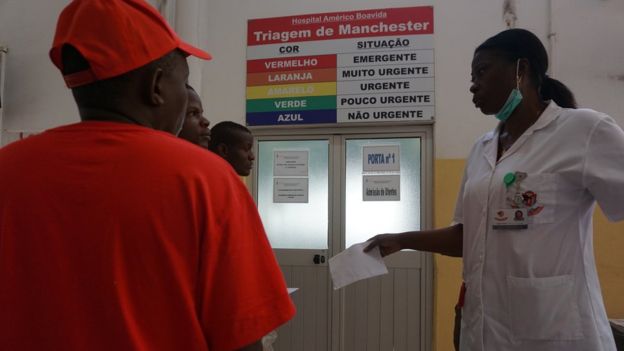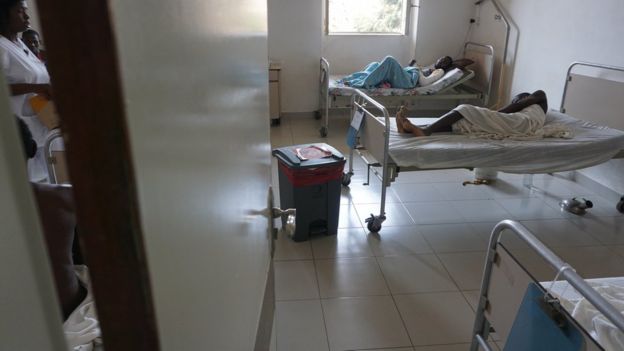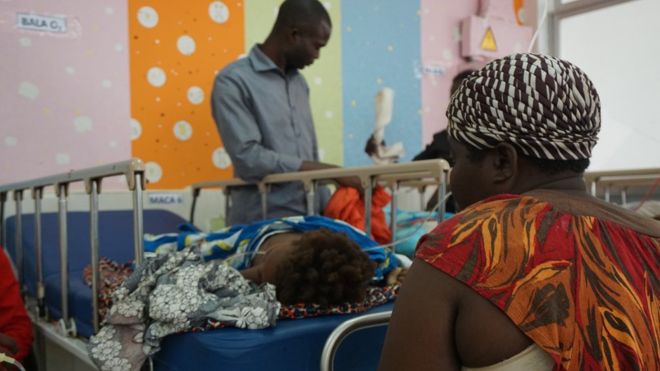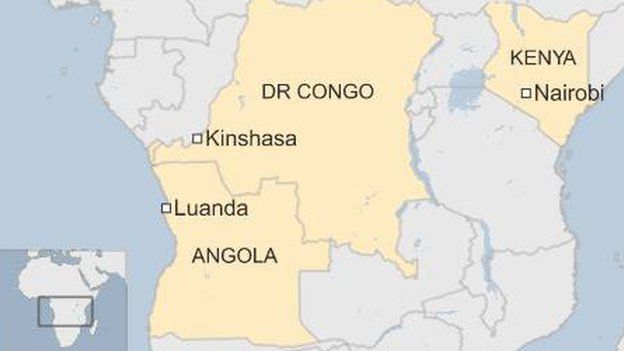In the green and shaded gardens of the Americo Boavida Hospital in Angola’s capital, Luanda, women in colourful printed dresses wait patiently for visiting hours to begin.
It is one of the biggest hospitals in the city, serving almost two million people.
Malaria is the most common killer here, but since December last year they have had to counter another, potentially more dangerous, mosquito-borne virus: Yellow fever.
In its 16 June report, the World Health Organization (WHO) said that 345 people are reported to have died from yellow fever in the last seven months among more than 3,000 cases in Angola.
Not since 1971 has there been such a serious outbreak, and the reasons why it has happened now are complex and many.

Dr Fortunato Silva, the clinical director at Americo Boavida, says that this outbreak is more worrying not only in relation to the number of cases, but also the number of deaths.
He thinks some of the reasons for this may include the virus becoming more virulent, immunity levels amongst the population dropping and most critically, people not vaccinating as they should.
“Ninety patients have been hospitalised with fever, jaundice and haemorrhaging, since 23 February,” Dr Silva said.
“There have been 33 deaths, which is a very high mortality rate. All of them had tested negative for malaria.”
Angola’s health system is well regarded, and there are established countrywide vaccination and awareness programmes.
Since 1989, babies have been vaccinated against yellow fever at the age of nine months, and children cannot attend school unless they have a valid yellow fever certificate.
Despite this, Dr Silva says, something is not working, and there are questions that need to be answered in terms of public health strategies.

Dr Francisco Songane, the representative in Angola for the UN children’s fund, Unicef, describes what is happening as “a major crisis”.
He says critical time was lost between samples being taken, tests being run, and results finally arriving three weeks later.
By the time confirmation of yellow fever came, it had spread from the densely populated area of K30, part of the capital’s Viana district, and then across the entire city.
The spread of yellow fever
Angola – 345 reported deaths, 3,137 suspected cases
Democratic Republic of the Congo – 71 reported deaths, 1,044 suspected cases (not all linked to Angola)
Kenya – two suspected cases (travellers returning from Angola)
China – 11 suspected cases (travellers returning from Angola)
Source: WHO
Dr Songane says that though measures were immediately put in place, in a city such as Luanda, where there are “huge neighbourhoods… a sea of so many houses, so populated, the virus spread very quickly”.
And to compound the already serious outbreak, there was a global shortage of the vaccine to contend with. And vaccines must be administered within 10 days of the outbreak being identified.
“The timeline was not being met,” he says. “And the shortage of vaccine meant that by then it had spread beyond Luanda.”
The shortage now means that the WHO now recommends cutting the standard dose of yellow fever vaccine by 80%. The smaller dose would provide immunity for at least 12 months, it says.
Further adding to the crisis was the widespread use of fake yellow fever certificates, because, as Dr Songane explains “there were also misconceptions that the vaccine will kill you, that you will get a disease.
“There is a need to counter this and get the message to the people that you can do good for yourself, your community, your neighbourhoods.
“Fake certificates will not protect you. That’s the message.”
Nearly all of Luanda’s population has now been vaccinated, and the ministry of health is in a race against time to get enough of the vaccine manufactured for the rest of the country.
What is yellow fever?
- Caused by a virus that is transmitted to humans by mosquitoes
- Difficult to diagnose and often confused with other diseases or fevers
- Presence of yellow fever antibodies can be detected by blood tests
- Most people recover after the first phase of infection that usually involves fever, muscle and back pain, headache, shivers, loss of appetite, and nausea or vomiting
- About 15% of people face a second, more serious phase involving high fever, jaundice, bleeding and deteriorating kidney function
- Half of those who enter the “toxic” phase usually die within 10 to 14 days The rest recover
Source: WHO
Angola strictly enforces international regulations on travellers coming in and out of the country, and Dr Songane says that whilst hard lessons have been learned, every country must now enforce these regulations.
Vaccines take six months to produce and if there is another serious outbreak, global supplies will not be able to keep up with the demand.
But it is too late to prevent its spread beyond Angola’s borders.
Neighbouring Democratic Republic of Congo has declared a localised yellow fever epidemic in three provinces, including the capital Kinshasa. Cases related to the outbreak in Angola have also surfaced in Kenya and China.
The mosquito that carries the virus, aedes aegypti, is found in most of the country, but it is prevalent in Luanda, made worse now by uncollected refuse.
Angola is one of Africa’s largest oil producers, and nearly 70% of the government’s income derives from oil.
In the boom years the country invested heavily in infrastructure projects and social welfare, but now with the collapse in the price of oil, basic services like garbage collection have stopped.
Rotting rubbish can be see piling high along with sewage running through crowded neighbourhood streets.
Dr Songane argues that it is urgent that a way is found to solve the issue of the rubbish piling up.

“People cannot continue to live in these conditions,” he says.
“This has become a rich and beautiful place for this mosquito to bite, and it’s made worse because it bites during the day. [The rubbish] is in the streets and people are being exposed every day.”
Only some of those who carry the yellow fever virus get the symptoms, but the rest, who may be unaware that they are carriers, can be bitten by the mosquito and therefore help spread the virus.
Dr Songane says the outbreak is not yet under control. He is aware that much needs to be done, but there is no sense of panic.
It is only when transmissions stop, he says, “that we can breathe. It’s not over until it’s over”.


